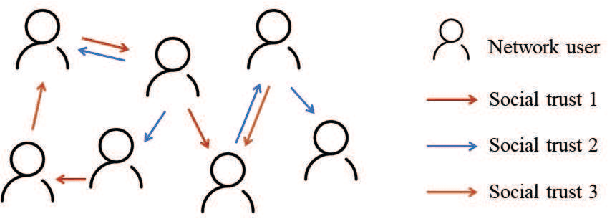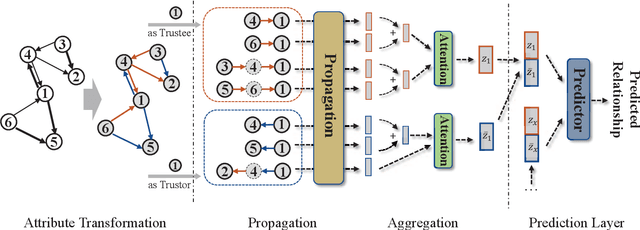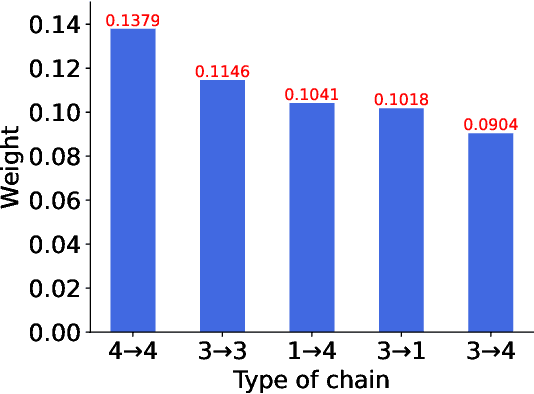Tie Qiu
TimeFormer: Capturing Temporal Relationships of Deformable 3D Gaussians for Robust Reconstruction
Nov 18, 2024Abstract:Dynamic scene reconstruction is a long-term challenge in 3D vision. Recent methods extend 3D Gaussian Splatting to dynamic scenes via additional deformation fields and apply explicit constraints like motion flow to guide the deformation. However, they learn motion changes from individual timestamps independently, making it challenging to reconstruct complex scenes, particularly when dealing with violent movement, extreme-shaped geometries, or reflective surfaces. To address the above issue, we design a plug-and-play module called TimeFormer to enable existing deformable 3D Gaussians reconstruction methods with the ability to implicitly model motion patterns from a learning perspective. Specifically, TimeFormer includes a Cross-Temporal Transformer Encoder, which adaptively learns the temporal relationships of deformable 3D Gaussians. Furthermore, we propose a two-stream optimization strategy that transfers the motion knowledge learned from TimeFormer to the base stream during the training phase. This allows us to remove TimeFormer during inference, thereby preserving the original rendering speed. Extensive experiments in the multi-view and monocular dynamic scenes validate qualitative and quantitative improvement brought by TimeFormer. Project Page: https://patrickddj.github.io/TimeFormer/
DS-NeRV: Implicit Neural Video Representation with Decomposed Static and Dynamic Codes
Mar 23, 2024Abstract:Implicit neural representations for video (NeRV) have recently become a novel way for high-quality video representation. However, existing works employ a single network to represent the entire video, which implicitly confuse static and dynamic information. This leads to an inability to effectively compress the redundant static information and lack the explicitly modeling of global temporal-coherent dynamic details. To solve above problems, we propose DS-NeRV, which decomposes videos into sparse learnable static codes and dynamic codes without the need for explicit optical flow or residual supervision. By setting different sampling rates for two codes and applying weighted sum and interpolation sampling methods, DS-NeRV efficiently utilizes redundant static information while maintaining high-frequency details. Additionally, we design a cross-channel attention-based (CCA) fusion module to efficiently fuse these two codes for frame decoding. Our approach achieves a high quality reconstruction of 31.2 PSNR with only 0.35M parameters thanks to separate static and dynamic codes representation and outperforms existing NeRV methods in many downstream tasks. Our project website is at https://haoyan14.github.io/DS-NeRV.
TrustGNN: Graph Neural Network based Trust Evaluation via Learnable Propagative and Composable Nature
May 25, 2022



Abstract:Trust evaluation is critical for many applications such as cyber security, social communication and recommender systems. Users and trust relationships among them can be seen as a graph. Graph neural networks (GNNs) show their powerful ability for analyzing graph-structural data. Very recently, existing work attempted to introduce the attributes and asymmetry of edges into GNNs for trust evaluation, while failed to capture some essential properties (e.g., the propagative and composable nature) of trust graphs. In this work, we propose a new GNN based trust evaluation method named TrustGNN, which integrates smartly the propagative and composable nature of trust graphs into a GNN framework for better trust evaluation. Specifically, TrustGNN designs specific propagative patterns for different propagative processes of trust, and distinguishes the contribution of different propagative processes to create new trust. Thus, TrustGNN can learn comprehensive node embeddings and predict trust relationships based on these embeddings. Experiments on some widely-used real-world datasets indicate that TrustGNN significantly outperforms the state-of-the-art methods. We further perform analytical experiments to demonstrate the effectiveness of the key designs in TrustGNN.
A Fast Ellipse Detector Using Projective Invariant Pruning
Aug 26, 2016



Abstract:Detecting elliptical objects from an image is a central task in robot navigation and industrial diagnosis where the detection time is always a critical issue. Existing methods are hardly applicable to these real-time scenarios of limited hardware resource due to the huge number of fragment candidates (edges or arcs) for fitting ellipse equations. In this paper, we present a fast algorithm detecting ellipses with high accuracy. The algorithm leverage a newly developed projective invariant to significantly prune the undesired candidates and to pick out elliptical ones. The invariant is able to reflect the intrinsic geometry of a planar curve, giving the value of -1 on any three collinear points and +1 for any six points on an ellipse. Thus, we apply the pruning and picking by simply comparing these binary values. Moreover, the calculation of the invariant only involves the determinant of a 3*3 matrix. Extensive experiments on three challenging data sets with 650 images demonstrate that our detector runs 20%-50% faster than the state-of-the-art algorithms with the comparable or higher precision.
 Add to Chrome
Add to Chrome Add to Firefox
Add to Firefox Add to Edge
Add to Edge